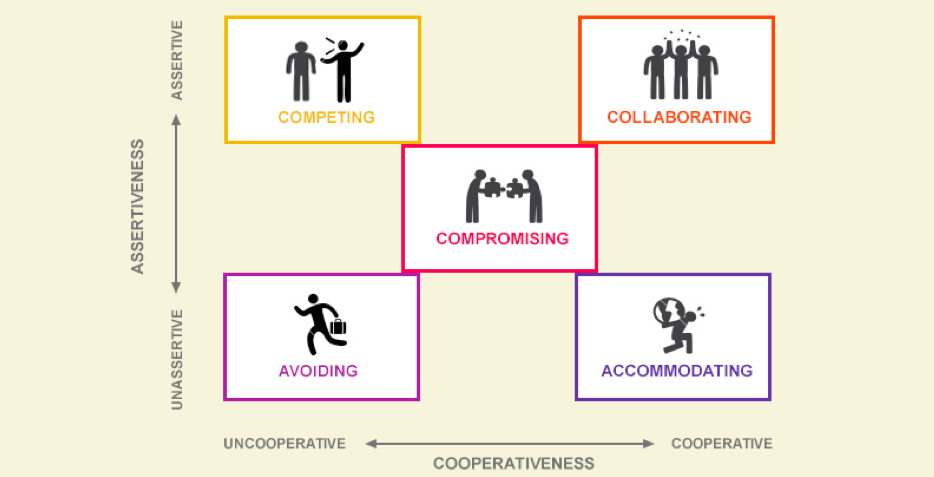University of Redlands Emergency Alert System
Alert Received: . For more information, visit: https://www.redlands.edu/alert/
University of Redlands
- Home
- Conflict Resolution Center
- Student Resources
Experiencing a conflict? Whether it’s with a friend, roommate, another member of a student organization, or faculty or staff member, conflicts happen. Learning to navigate conflicts is important to success in virtually any field, and a vital step in being a part of a community and having healthy, meaningful relationships with others.
If you are experiencing a conflict and would like guidance or support, we recommend scheduling a conflict consultation with one of our trained facilitators. They will talk with you individually about your conflict and the various ways the CRC can help/support.
To schedule a Conflict Consultation, please complete and submit a CRC form.
At a Conflict Consultation, a trained staff person will talk with you to learn more about the conflict you are experiencing, and provide information and guidance on pathways for resolution. Those pathways include:
Don’t wait! Avoiding dealing with a conflict—especially anyone who is already feeling upset or frustrated—will only make things worse. Sometimes we try the same strategy over and over, which can also increase frustration. For these reasons, we recommend reaching out as soon as possible.
Services offered by the CRC
Please explore the resources below if you are hoping to learn more about navigating conflict on your own. [The following information adapted, with permission from NC State University.]
Though we often think of conflict as negative, a great first step to resolving conflict is to reframe our attitude and approach toward conflict. Addressing conflicts within a relationship or group are an exercise in honest communication, and often results in a stronger relationship or better group cohesiveness. Even a willingness to bring up and address conflict demonstrates concern, commitment, and a desire to preserve the relationship. Conflict also allows us to gain new perspectives and learn more about others.
Model from: https://counseling.dasa.ncsu.edu/resources/self-help-resources/conflict-resolution/

There are five conflict management styles. No one style is “right,” or “wrong;” instead the styles all have advantages and disadvantages and may be more or less helpful depending on the situation. Most people have a default or preferred style. It may be helpful to think about your typical style and whether a different approach may help resolve your conflict. Also, understanding someone else’s style can help give us the insight to find solutions. Read more about each style below.
When you use the competing style, you manage conflict by seeking to meet your needs at the expense of the other person. Someone whose conflict management style is competing seeks to “win at all costs,” and has low concern for others’ needs or preserving those relationships. This is also referred to as “controlling” or “forcing.” If you conflict with someone who uses the controlling conflict management style, you may need to stand up for your rights and be assertive, or get others involved. The competing style of conflict management works well when you need to act quickly or when you believe you are correct. On the other hand, this style can intimidate others, cause conflict to escalate, or damage relationships.
When you use the collaborating style, you manage conflict by negotiating and may believe that two heads are better than one. When collaborating you work with others to explore their disagreement, generate alternatives, and find a mutually satisfying solution. The collaborating style of conflict management allows you to learn from another’s perspective. It can be helpful when you need a decision that addresses both parties’ concerns. On the other hand, the collaborating style of conflict management may be unsuitable either for minor decisions or when time is limited.
When you use the compromising style, you manage conflict by splitting the difference so that the solution partially satisfies both parties. The compromising style of conflict management is useful when other styles fail, for fast decision-making on minor disagreements, or when two equally strong parties commit to mutually exclusive goals. On the other hand, the compromising style of conflict management may cause you to lose sight of larger issues and values and may not please everyone.
When you use the accommodating style, you manage conflict by soft bargaining or “killing your enemy with kindness.” When you use the accommodating style, you yield to another person’s point of view and pay attention to his or her concerns while neglecting your own. The accommodating style is useful when you see that you are wrong or when harmony is most important to you. However, if you use the accommodating style, others may not address your concerns.
When you use the Avoiding style, you manage conflict by leaving well enough alone or by not addressing the conflict. You may either withdraw from the situation or postpone confrontation. The Avoiding style of conflict is useful when confrontation may be dangerous or damaging, when an issue is unimportant, or when a situation needs to cool down, or when you need more time to prepare. On the other hand, if you use the Avoiding style of conflict management, issues may go unaddressed.
Once you have determined your goal and your conflict management style, you may now wonder how you can resolve the conflict as you planned. Conflict resolution is highly dependent upon good communication skills. Active listening results in effective communication and conflict resolution.
Plan for follow-up to make sure the solutions are working for everyone.